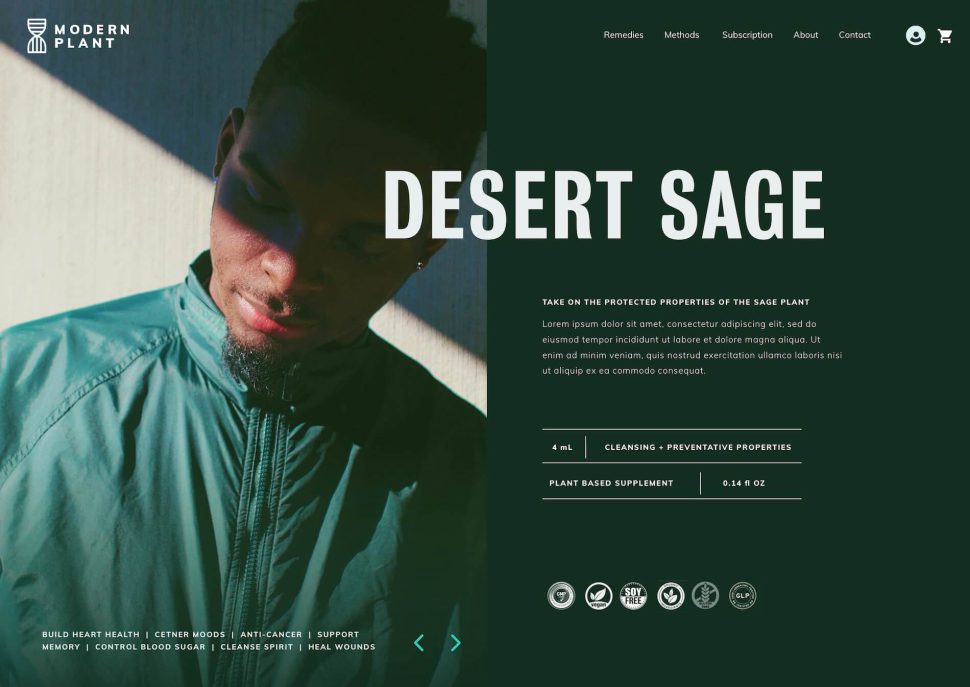May 3, 2024
Fostering Innovation–Cultivating a Dynamic & Creative Culture for Success
- Visual Soldiers
- Design
- minute read

TLDR
Fostering innovation in your business will help you stay competitive. Do you empower your employees to take risks? As an agency, the creative culture comes naturally to us, but it doesn’t for everyone. We’ve come up with a few tips on how to guide and encourage innovative thinking throughout your organization. Two simple ways to start today would be to encourage autonomy and give your team enough time to take some risks. Failure often drives growth!
Fostering innovation is essential for companies looking to stay ahead of the competition. But how can organizations create a dynamic and creative culture that encourages innovative thinking and drives success? That’s where cultivating the right environment becomes crucial.
At Visual Soldiers, we understand the importance of creating an atmosphere that stimulates innovation. Our brand voice is all about embracing creativity and pushing boundaries. By encouraging open communication, fostering collaboration, and providing opportunities for experimentation, we empower our employees to think outside the box and come up with groundbreaking ideas.
In this article, we will explore the various strategies and approaches that can help organizations cultivate a dynamic and creative culture for success. From fostering a growth mindset to promoting diversity and inclusivity, we will delve into the key factors that contribute to an innovative environment.
The Importance of Fostering Innovation in Businesses
Innovation is the lifeblood of any successful business. It is the driving force behind new products, services, and processes that can revolutionize industries and propel organizations to new heights. In today’s rapidly evolving marketplace, businesses that fail to innovate risk becoming stagnant and irrelevant.
Fostering innovation within an organization is crucial for several reasons. Firstly, innovation allows companies to differentiate themselves from competitors. By constantly developing and improving their offerings, businesses can carve out a unique position in the market that sets them apart. This leads to increased customer loyalty and a stronger market presence.
Secondly, innovation drives growth. New ideas and solutions can open up untapped markets, attract new customers, and drive revenue growth. By continuously seeking out opportunities for innovation, businesses can expand their reach and maximize their potential for success.
Lastly, innovation is essential for staying ahead of the curve. Technology and consumer preferences are constantly changing, and businesses that fail to keep up will quickly be left behind. By fostering a culture of innovation, organizations can stay agile and adapt to emerging trends, ensuring their long-term viability in a rapidly evolving business landscape.
The Benefits of a Dynamic and Creative Culture
A dynamic and creative culture has numerous benefits for an organization. It not only fosters innovation but also enhances employee engagement, drives productivity, and attracts top talent. Let’s explore some of the key benefits in more detail.
First and foremost, a dynamic and creative culture promotes innovation by encouraging employees to think outside the box and challenge the status quo. When individuals feel empowered to share their ideas and take risks, they are more likely to come up with innovative solutions to problems. This leads to a continuous flow of fresh ideas and a culture of experimentation.
Furthermore, a dynamic and creative culture enhances employee engagement. When employees feel that their ideas and contributions are valued, they become more motivated and invested in their work. This results in higher job satisfaction, increased productivity, and lower turnover rates. Engaged employees are also more likely to go the extra mile and contribute to the overall success of the organization.
A dynamic and creative culture also helps attract and retain top talent. In today’s competitive job market, employees are increasingly seeking out organizations that foster a culture of innovation and offer opportunities for growth and development. By creating an environment that values creativity and encourages continuous learning, organizations can attract and retain high-performing individuals who can drive the company forward.
Characteristics of a Culture That Promotes Innovation
Creating a culture that promotes innovation requires certain characteristics and values. Let’s explore some of the key traits of an innovative culture:
- Open Communication: A culture of innovation thrives on open and transparent communication. When employees feel comfortable expressing their ideas, concerns, and feedback, they are more likely to contribute to the innovation process. Organizations should encourage open dialogue and provide platforms for idea-sharing and collaboration.
- Embracing Diversity and Inclusivity: Diversity in perspectives, backgrounds, and experiences leads to more innovative thinking. By fostering a diverse and inclusive culture, organizations can tap into a wide range of ideas and approaches. This includes promoting diversity in hiring practices, creating inclusive policies, and providing equal opportunities for all employees.
- Encouraging Autonomy: Giving employees the freedom to explore their ideas and make decisions fosters a sense of ownership and empowerment. When individuals have autonomy over their work, they are more likely to take risks and think creatively. Organizations should trust their employees and provide them with the autonomy to experiment and innovate.
- Rewarding and Recognizing Innovation: Recognizing and rewarding innovative ideas and contributions reinforces the value of innovation within an organization. This can be done through incentives, recognition programs, or career advancement opportunities. By acknowledging and celebrating innovation, organizations create a culture that encourages individuals to think creatively and contribute their ideas.
- Adaptability and Flexibility: An innovative culture is one that embraces change and is adaptable to new ideas and approaches. Organizations should foster a flexible and agile mindset that encourages individuals to adapt to new challenges and seize opportunities. This includes being open to feedback, continuously learning, and adapting strategies based on market trends and customer needs.
Strategies for Creating a Culture of Innovation
Creating a culture of innovation is not an overnight process. It requires a strategic and deliberate approach. Here are some key strategies that organizations can implement to foster a culture of innovation:
Encouraging a Growth Mindset in the Workplace
A growth mindset is the belief that abilities and intelligence can be developed and improved through hard work, dedication, and continuous learning. By promoting a growth mindset within the workplace, organizations can create an environment that values effort, resilience, and a willingness to learn from failures.
Leaders should encourage employees to embrace challenges, persist in the face of setbacks, and see failures as opportunities for growth. This mindset shift helps individuals overcome the fear of failure and encourages them to take calculated risks and explore new ideas.
Providing Opportunities for Collaboration and Cross-Functional Teams
Collaboration is a key driver of innovation. By bringing together individuals from different departments, backgrounds, and skill sets, organizations can foster the exchange of ideas and promote cross-pollination of perspectives.
Organizations should create opportunities for collaboration through cross-functional projects, workshops, and brainstorming sessions. This allows employees to learn from each other, leverage their unique strengths, and collectively solve problems. Collaborative environments also build trust and encourage open communication, creating a safe space for sharing ideas and feedback.
Empowering Employees to Take Risks and Learn from Failures
Innovation often involves taking risks and exploring uncharted territories. Organizations should create a culture that encourages calculated risk-taking and embraces failures as learning opportunities.
Leaders should provide a safe environment for employees to experiment and take risks without fear of judgment or punishment. This can be achieved by celebrating failures as learning experiences, providing support and resources for experimentation, and fostering a culture of psychological safety.
Promoting Continuous Learning and Development
A culture of innovation requires a commitment to continuous learning and development. Organizations should invest in training programs, workshops, and resources that encourage employees to expand their knowledge and skills.
Leaders should prioritize learning and provide opportunities for personal and professional growth. This can include mentoring programs, skill-building workshops, or access to online learning platforms. By promoting a culture of lifelong learning, organizations empower employees to stay up-to-date with industry trends and develop innovative solutions.
Measuring and Evaluating the Success of an Innovative Culture
Creating an innovative culture is an ongoing process, and it is important to measure and evaluate its success. Here are some key metrics and indicators that can be used to assess the effectiveness of an innovative culture:
- Idea Generation and Implementation: Measure the number of ideas generated by employees and the percentage of ideas that are implemented. This indicates the level of employee engagement and the effectiveness of the innovation process.
- Employee Satisfaction and Engagement: Conduct regular surveys or assessments to gauge employee satisfaction and engagement levels. Higher levels of satisfaction and engagement indicate a positive and innovative culture.
- Employee Retention and Turnover: Monitor employee retention rates and turnover. High employee retention rates suggest that employees feel valued, engaged, and satisfied with the organization’s culture.
- Customer Feedback and Satisfaction: Measure customer satisfaction levels and gather feedback on innovative products, services, or processes. Positive customer feedback indicates the effectiveness of the organization’s innovation efforts.
- Market Impact and Competitiveness: Assess the organization’s market impact and competitiveness. This can be measured through market share, revenue growth, or industry recognition. A strong market position suggests that the organization’s innovative culture is driving success.
By regularly monitoring and evaluating these metrics, organizations can identify areas for improvement and make data-driven decisions to further foster an innovative culture.
Conclusion: The Impact of Fostering Innovation on Business Success
Fostering a dynamic and creative culture is crucial for organizations seeking to thrive in today’s fast-paced business landscape. By creating an environment that values innovation, organizations can drive growth, attract top talent, and stay ahead of the competition.
From encouraging a growth mindset to promoting collaboration and continuous learning, there are several strategies that organizations can implement to cultivate an innovative culture. By embracing these strategies and measuring the effectiveness of their efforts, organizations can create a culture that inspires individuals to reach their full potential and drive organizational success.
So, unleash your creativity, embrace innovation, and cultivate a dynamic and creative culture within your organization. The possibilities are endless when you create an environment that encourages individuals to think outside the box and push the boundaries of what is possible. Start fostering innovation today and watch your organization soar to new heights of success.









